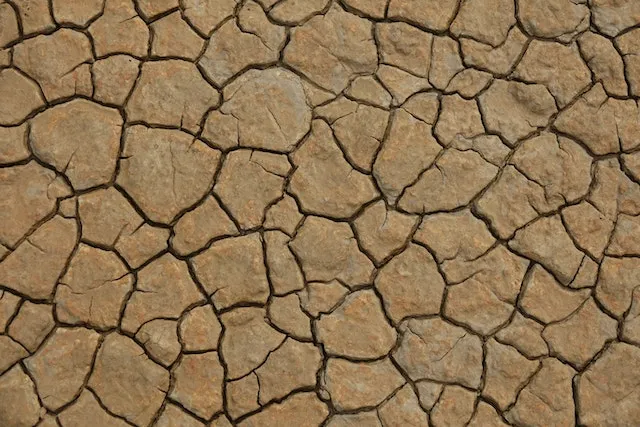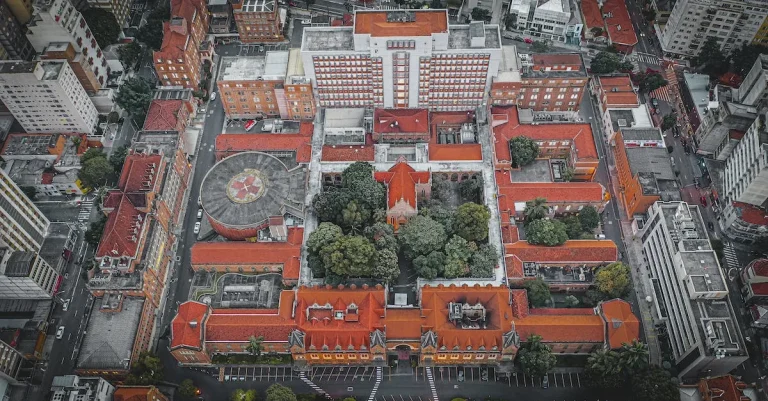Will Los Angeles Run Out Of Water?
With its large population and location in an arid region, water supply has long been a concern for Los Angeles. In recent years drought and population growth have renewed questions about whether the city could eventually run out of water.
If you’re short on time, here’s a quick answer: While Los Angeles faces challenges securing adequate water, especially during droughts, it’s unlikely to completely run out of water anytime soon. However, shortages will continue occurring if consumption is not reduced and new sources secured.
In this comprehensive article, we’ll examine Los Angeles’ complex water infrastructure, sources of supply, challenges securing water, conservation efforts, and what the future outlook is for water in LA.
Los Angeles’ Water Infrastructure and Supply Sources
Los Angeles, the second-largest city in the United States, faces significant challenges when it comes to water supply. With a growing population and limited local resources, it is crucial for the city to rely on a well-maintained water infrastructure and diverse supply sources.
Let’s take a closer look at the key components that support Los Angeles’ water system.
LA Aqueducts
One of the primary sources of water for Los Angeles is the Los Angeles Aqueduct system. This impressive network of aqueducts and pipelines stretches over 400 miles, delivering water from the eastern Sierra Nevada Mountains to the city.
The LA Aqueducts have been a crucial lifeline for the city since their completion in 1913, providing a significant portion of the water supply for millions of residents.
The Sacramento River Delta
Another essential water source for Los Angeles is the Sacramento River Delta. Located in Northern California, the Delta is a vital hub for water distribution throughout the state. The State Water Project, which includes the California Aqueduct, transports water from the Delta to various regions, including Los Angeles.
This reliable source helps meet the city’s water demand, particularly during periods of drought.
Colorado River
Los Angeles also benefits from the Colorado River, one of the most significant sources of water in the western United States. Through the Colorado River Aqueduct, water is transported over 240 miles to Southern California.
This reliable water supply supports not only Los Angeles but also other cities and agricultural areas in the region.
Groundwater
In addition to imported water sources, Los Angeles relies on groundwater to supplement its supply. Groundwater is water that is stored beneath the Earth’s surface in aquifers. The Los Angeles Basin, which includes the San Fernando Valley and other surrounding areas, has substantial underground water reserves.
Proper management and conservation of groundwater are crucial to ensure its long-term sustainability.
Water Reuse
Recognizing the importance of sustainable water management, Los Angeles has implemented various water reuse initiatives. The city treats and reuses wastewater, transforming it into high-quality water for non-potable purposes such as irrigation and industrial use.
By embracing water reuse practices, Los Angeles can reduce its reliance on external water sources and promote a more efficient and sustainable water system.
Challenges Facing Los Angeles’ Water Supply
Los Angeles, the second-largest city in the United States, is facing several challenges when it comes to its water supply. These challenges include drought and climate change, population growth, aging infrastructure, and water rights.
Drought and Climate Change
One of the major challenges that Los Angeles is dealing with is the impact of drought and climate change on its water supply. California has experienced severe droughts in recent years, causing water levels in reservoirs and groundwater basins to decline.
This has put a strain on the city’s ability to meet its water demands.
Climate change is also exacerbating the situation, with rising temperatures and changing rainfall patterns leading to increased evaporation and reduced snowpack in the Sierra Nevada mountains, which serves as a crucial source of water for the region.
Population Growth
Another significant challenge is the rapid population growth in Los Angeles. With a population of over 4 million people, the demand for water continues to increase. As more people move to the city, the strain on the water supply becomes more pronounced.
The increase in population also leads to greater water consumption for residential, commercial, and industrial purposes. This further puts pressure on an already limited water supply.
Aging Infrastructure
Los Angeles is also grappling with the issue of aging infrastructure. Many of the city’s water pipes and treatment facilities were built decades ago and are in need of repair or replacement. Leaky pipes and outdated technology result in significant water losses and inefficiencies in the distribution system.
The city has recognized the need to invest in upgrading its infrastructure to ensure a reliable and sustainable water supply. Efforts are being made to replace old pipes, improve water treatment plants, and implement innovative technologies to reduce water waste.
Water Rights
Water rights are another complex issue that Los Angeles faces. The city relies on water imported from other regions, such as the Colorado River and the Sacramento-San Joaquin River Delta. However, disputes over water rights and allocation have arisen between different regions and stakeholders.
Resolving these conflicts and ensuring equitable distribution of water resources is crucial for Los Angeles’ water security. Collaboration and cooperation among all parties involved are necessary to mitigate the risks and uncertainties associated with water rights.
It is important for Los Angeles to address these challenges proactively and implement sustainable water management practices to ensure a reliable water supply for its growing population. By investing in water conservation, infrastructure upgrades, and innovative solutions, the city can mitigate the risks of running out of water and secure its future water needs.
Water Conservation Efforts in Los Angeles
As concerns about the availability of water continue to rise, cities like Los Angeles are taking proactive measures to ensure a sustainable water supply for their residents. Through various water conservation efforts, the city is working towards reducing water consumption and increasing efficiency.
Let’s explore some of the key initiatives being implemented in Los Angeles.
Reducing Per Capita Use
One of the primary focuses of water conservation efforts in Los Angeles is to reduce per capita water use. The city has set ambitious targets to decrease individual water consumption through various strategies.
By implementing strict water regulations, promoting water-saving technologies, and incentivizing residents to conserve water, Los Angeles aims to significantly decrease the amount of water used by each person on a daily basis.
These efforts are crucial in ensuring a sustainable water supply for future generations.
Increasing Efficiency
Another key aspect of water conservation in Los Angeles is increasing efficiency in water usage. This involves upgrading infrastructure, such as replacing old pipes with more efficient ones, and implementing advanced water management systems.
By improving the efficiency of water distribution and reducing leaks and wastage, the city can optimize its water resources and minimize losses. These measures not only help conserve water but also contribute to cost savings and environmental sustainability.
Stormwater Capture
Stormwater capture is an innovative approach to water conservation that Los Angeles has embraced. Instead of letting rainwater wash away into the ocean, the city has implemented systems to capture and store this valuable resource.
Stormwater runoff is collected, treated, and reused for various purposes such as irrigation, groundwater recharge, and industrial processes. By maximizing the use of stormwater, Los Angeles can reduce its reliance on imported water sources and ensure a more sustainable water supply.
Public Education
Public education plays a crucial role in water conservation efforts. In Los Angeles, educational campaigns are being conducted to raise awareness about the importance of water conservation and provide practical tips on how residents can contribute to saving water.
From simple actions like fixing leaks and using water-efficient appliances to adopting water-wise landscaping practices, every individual can make a significant difference. By empowering residents with knowledge and encouraging responsible water usage, Los Angeles aims to create a culture of conservation and ensure a resilient water future for the city.
Future Water Security Outlook for LA
As the population of Los Angeles continues to grow, concerns about water scarcity and the possibility of running out of water have become increasingly prominent. However, there are several initiatives in place to ensure a secure water future for the city.
Planned Infrastructure Upgrades
One of the key strategies to address water security in Los Angeles is through planned infrastructure upgrades. The city is investing in the improvement and expansion of its water storage and distribution systems to better manage and conserve water resources.
These upgrades include the construction of new reservoirs, the renovation of existing water treatment plants, and the implementation of advanced water recycling technologies.
According to the Los Angeles Department of Water and Power (LADWP), these infrastructure upgrades will help the city increase its water supply capacity and reduce its reliance on imported water. This will not only ensure a more reliable water supply but also help mitigate the risk of running out of water in the future.
Developing Local Supplies
Another approach to enhancing water security in Los Angeles is by developing local water supplies. The city is exploring various options such as increasing groundwater recharge, capturing stormwater, and promoting the use of recycled water for non-potable purposes.
These initiatives aim to reduce the city’s dependence on imported water sources and create a more sustainable water supply system.
According to a report by the Metropolitan Water District of Southern California (MWD), increasing local water supplies can help reduce the vulnerability of Los Angeles to droughts and other water supply disruptions.
By diversifying its water sources, the city can become more resilient to future water challenges and ensure a more secure water future.
The Role of Conservation
Conservation plays a crucial role in ensuring water security for Los Angeles. The city has implemented various water conservation measures, including mandatory water restrictions, public awareness campaigns, and incentives for water-efficient practices.
These efforts aim to reduce water demand and promote responsible water use among residents, businesses, and industries.
According to the LADWP, water conservation efforts have been successful in reducing per capita water consumption in Los Angeles. Through the collective efforts of the community, the city has been able to conserve significant amounts of water and improve its overall water efficiency.
This demonstrates the importance of individual and collective actions in securing the city’s water future.
Seeking Drought Resilience
Given the recurrent drought conditions in California, building drought resilience is a top priority for Los Angeles. The city is working on developing innovative drought response plans and implementing water shortage contingency measures to minimize the impact of droughts on the water supply.
According to the California Department of Water Resources, Los Angeles has made significant progress in drought preparedness by investing in water storage, diversifying water sources, and implementing drought-resistant landscaping practices.
These efforts are essential in ensuring that the city can withstand future droughts and maintain water security for its residents.
Conclusion
While occasional water shortages will continue due to droughts and increasing demand, Los Angeles has invested in diversifying supplies and developing local resources. Strict conservation measures also help reduce strain on imported water. Barring an unprecedented multi-decade megadrought, Los Angeles is not at imminent risk of running out of water, but continued efforts are needed to increase resiliency.








